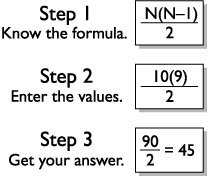Communications Planning
|
| < Day Day Up > |
|
Because project managers spend so much of their time invested in communications, it’s essential for them to provide adequate planning for communication. Such planning focuses on who needs what information and when they need it. A project manager must identify the stakeholders’ requirements for communication, determine what information is actually needed, and then plan to deliver the needed information on a preset schedule or based on project conditions.
Communications planning is typically completed early in the project. As part of this planning, the modality of the communications is documented. Some stakeholders may prefer a hard copy document rather than an e-mail. Later in the project these needs can change. Throughout the project, the needs of the stakeholders, the type of information requested, and the modality of the information should be reviewed for accuracy—and updated if needed.
Identifying Communication Requirements
Stakeholders will need different types of information depending on their interest in the project and the priority of the project. The project manager will need to complete an analysis of the identified stakeholders to determine what information they actually need—and how often the information is needed.
There is no value in expending resources on generating information, reports, and analyses for stakeholders who have no interest in the information. An accurate assessment of stakeholders’ needs for information is required early in the project planning processes. As a rule of thumb, provide information when its presence contributes to success or when a lack of information can contribute to failure.
The project manager and the project team can identify the demand for communications on the basis of the following requirements:
-
Project structure within the performing organization
-
Stakeholder responsibility
-
Departments and disciplines involved with the project work
-
Number of individuals involved in the project and their locale
-
Number and type of external communication needs (media, community, or customers)
On the PMP exam, and in the real world, the project manager will need to identify the number of communication channels within a project. Here’s a magic formula to calculate the number of communication channels: N(N–1)/2, where N represents the number of identified stakeholders. For example, if a project has 10 stakeholders, the formula would read 10(10–1)/2 for a total of 45 communication channels. Figure 10-1 illustrates the formula.

Figure 10-1: Communication channels must be identified.
Exploring Communication Modalities
As part of the communications planning, the project manager should identify all of the required and approved methods of communicating. Some projects may be very sensitive and contain classified information that not all stakeholders are privy to; other projects may contain information that’s open for anyone to explore. Whatever the case, the project manager should identify what requirements exist, if any, for the communication modalities.
Communication modalities can also include meetings, reports, memos, e-mails, and so on. The project manager should identify which are the preferred methods of communicating based on the conditions of the message to be communicated. Consider the following, which may have an effect on the communication plan:
-
Information schedule Stakeholders, such as management and the project customer, may require regularly scheduled reports and updates. Should conditions within the project affect the project success, immediate communications may be expected.
-
Technology Because of the demands of the project, there may be technology changes needed to fulfill the project request. For example, the project may require an internal web site that details project progress. If such a web site does not exist, then time and monies will need to be invested into this communication requirement.
-
Project staffing The project manager should evaluate the abilities of the project team to determine if appropriate levels of competency exist to fulfill the communication requirements or if training will be required for the project team.
-
Project length The length of the project can have an influence on the project technology. Advances in technology may replace a long-term project’s communication model. A short-term project may not have the same technology requirements as a long-term project but could nevertheless benefit from the successful model a larger project uses.
Evaluating the Project Constraints and Assumptions
Every project has constraints and assumptions. Recall that constraints are any force that limits the project’s options. A project constraint, such as contractual obligations, may require extensive communications. The requirements of the contract should be evaluated against the demands of the project staff to determine if extra resources will be needed to handle the communications.
Assumptions can also affect communications. Consider a project operating under the assumption that communications with management can happen only through e-mail. Management, however, expects the project manager to provide formal status reports and daily updates via memos and also needs staffing updates from each of the project team members. This false assumption can impose time demands the project manager had not expected.
|
| < Day Day Up > |
|
EAN: 2147483647
Pages: 209